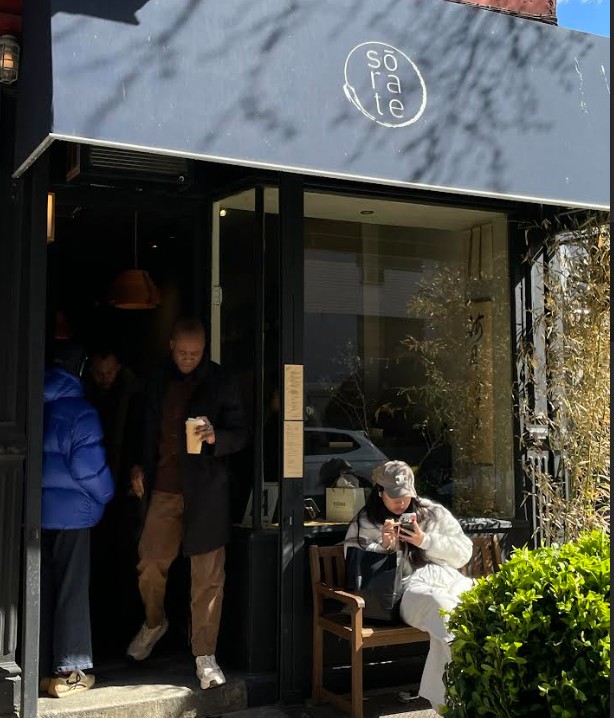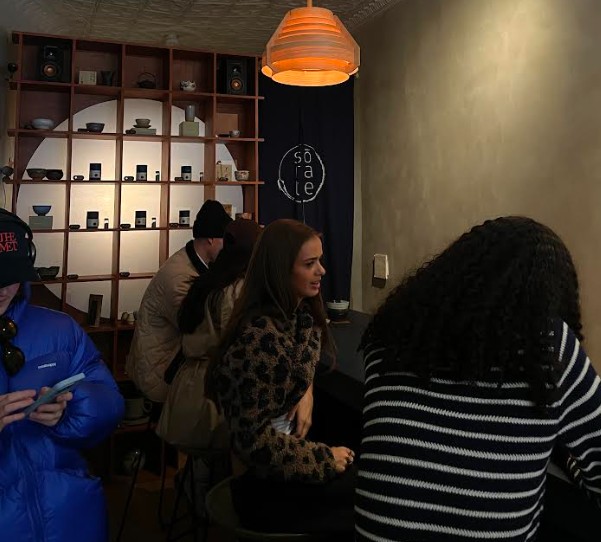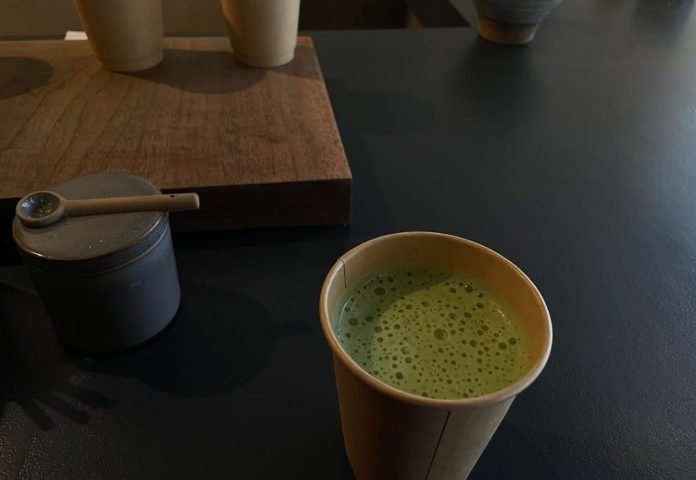By Ruichen Ge, AsAmNews Intern
On a recent Saturday afternoon, the line outside Sorate, a minimalist Japanese teahouse tucked between boutiques in SoHo, snaked halfway down the block. Most patrons waited upwards of twenty minutes for a single matcha drink. But for many of them, matcha isn’t just a beverage — it’s a ritual of texture, a curated moment of calm, and a deeply aesthetic experience.
Sorate, founded by a team of Italian and Japanese tea connoisseurs, positions itself as a premium purveyor of ceremonial-grade Japanese green teas. According to its official website, the shop focuses on authentic sourcing and preparation, offering various matcha grades, including usucha (thin tea) and koicha (thick tea), which are traditionally used in Japanese tea ceremonies. Their menu ranges from classic hot matcha to modern twists like sparkling matcha yuzu and matcha affogato — a blend of heritage and innovation.
Among the crowd at Sorate were Nadita Hapsari (NYU), Safira Rivani and their two friends. All four Indonesian students are currently enrolled at NYU and Columbia. All self-declared matcha devotees, the group described their obsession not in terms of health benefits or tradition, but taste and texture.
“It’s about how it feels in your mouth,” said Hapsari, who runs a dedicated Instagram account where she rates NYC’s matcha offerings. She also mentioned that coffee often upsets her stomach, making matcha one of the few caffeinated drinks she can tolerate. “Matcha is the only thing with caffeine I can drink,” she added. “And I actually love it.”

Rivani described her love for matcha as purely sensory: “I just really like how it tastes. That’s all.”
Interestingly, these students noted that matcha isn’t only trending in NYC. Back home in Indonesia, they said, matcha cafes have surged in popularity since 2024, mirroring a rise they’ve now witnessed in New York. On Instagram, their For You pages and reels are increasingly dominated by matcha aesthetics.
This multi-layered enthusiasm isn’t isolated. According to a recent article by Grub Street, NYC has seen a rapid growth in matcha-dedicated cafes, from Cha Cha Matcha to Matchaful and Kettl. Whether it’s through TikTok aesthetics or wellness-oriented menus, matcha has found new footing among younger, urban audiences.

While some customers are drawn to matcha’s calming amino acid, L-theanine, or its measured caffeine release compared to coffee, many, like those interviewed at Sorate, seem driven less by science and more by a multi-sensory appeal: the thick jade green, the fine powder whisked into froth, the quiet ceremony of it all.
A 2021 randomized controlled study published in Nutrients found that daily matcha consumption helped middle-aged adults sustain attention even under mild psychological stress. Meanwhile, Harvard Health Publishing highlighted how tea’s flavonoids can lower heart disease risk by reducing LDL cholesterol and blood pressure. A 2024 review further emphasized matcha’s anti-inflammatory potential and its high concentrations of plant compounds like EGCG and chlorophyll.
Of course, few customers waiting in line are quoting research papers. For them, the draw is quieter, more tactile. What brings them back isn’t a molecule or a metric — it’s the texture, the color, the quiet processional of heat, powder, and calm that asks you to slow down. In a city that moves quickly and talks loudly, matcha has become a way of reclaiming stillness, one cup at a time.
Support our June Membership Drive and receive member-only benefits. Help us reach our goal of $10,000 in new donations and monthly and annual donation pledges by the end of the Month.
We are published by the non-profit Asian American Media Inc and supported by our readers along with the Robert Wood Johnson Foundation, AARP, Report for America/GroundTruth Project & Koo and Patricia Yuen of the Yuen Foundation.
You can make your tax-deductible donations here via credit card, debit card, Apple Pay, Google Pay, PayPal and Venmo. Stock donations and donations via DAFs are also welcomed. Contact us at info @ asamnews dot com for more info.




